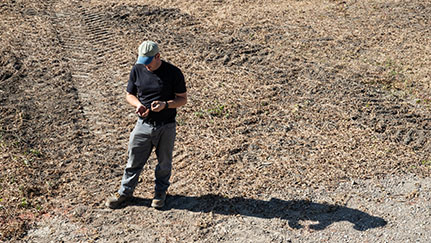Farmers and ranchers face a range of financial challenges heading into 2023. It’s a call for new thinking when securing what you need to cost-efficiently raise crops and livestock in the coming year.
Cost inflation, volatile crop and livestock markets, stressful crop weather and constraints like a tight labor pool and supply chain logjams are just a few of the challenges keeping farmers and ranchers up at night. Many Nationwide team members know those stressors well because they’re farmers and ranchers themselves. And like other family farmers, they’re doing what they can to minimize the financial impact of the challenges in 2023.
“As I think about the challenges ahead of my family’s farm and others like it, I'm worried about working capital and all this pressure as costs increase,” said Erin Cumings, Iowa farmer and Nationwide senior consultant. “We’re fortunate to have high commodity prices right now, but we’re planning for a time in the future when that may not be the case.”
Given the expected volatility in the marketplace for a range of crop and livestock expenses, apply that type of new thinking to things like:
- Crop seed, herbicides and fertilizer
- Livestock feed and pharmaceuticals
- Farm machinery and equipment
- Farm buildings, grain bins and other structures
Think acre-by-acre
What’s that new thinking mean? Quick decision-making on buying things like seed, chemical and fertilizer is one way to overcome the price inflation affecting just about every ag product. But with that financial pressure and sometimes limited product availability, farmers like Cumings are considering new approaches. They’re assessing needs in more detail and weighing new crop products and strategies. It takes a new perspective, according to Iowa farmer and Nationwide Agribusiness Risk Management Consultant Derek Hommer, CCA.
“Think about the individual acre, not the field. Looking ahead, I am thinking much more about how I manage every individual acre on my farm. I may not need 250 pounds of nitrogen on every acre, for example,” said Hommer, who also manages a farm in Iowa. “Think about how to maximize every input and match the needs of your crop with growing conditions to cut overall cost. Attention to every acre can help you save money on things like seed and fertilizer.”
Consider alternatives
Given the instability of market sectors like fertilizer, it’s a good time to look into alternative products. Depending on your situation, a crop biological, for example, may enable you to provide the nutrition your crop needs. And it may have a lower price tag or improved availability. It’s sometimes a leap of faith. But testing new products can give you a feel for how they can potentially boost crop performance in the future.
“Just like any new technology or innovation, consider starting small when piloting new products like biologicals,” Cumings said. “Measure performance on a per-acre basis and don’t be afraid to fail fast or change things up.”
Manage crop input risk
There can be risk to trying a new product to cut costs or avoid troublesome logistics or availability. Some products may not be tested over multiple years. That’s a common prerequisite for many farmers in making such changes. Whether you’re applying conventional fertilizer or a new product, Hommer recommends doing what you can to hedge the risk of its cost.
“If your plan is to buy inputs and put the grain in the bin with a wait and see mentality, you're not managing risk,” he said. “I'm not saying sell all your crop ahead. If you're buying nitrogen and it will translate to 12 bushels/acre of production, I would make a commitment for those 12 bushels.”
Be sure to always include your insurance agent as you determine the right changes to make to help maximize potential revenue and minimize expenses for your farm operation. See why a Nationwide Farm Certified agent is a trusted advisor for your farm operation.
